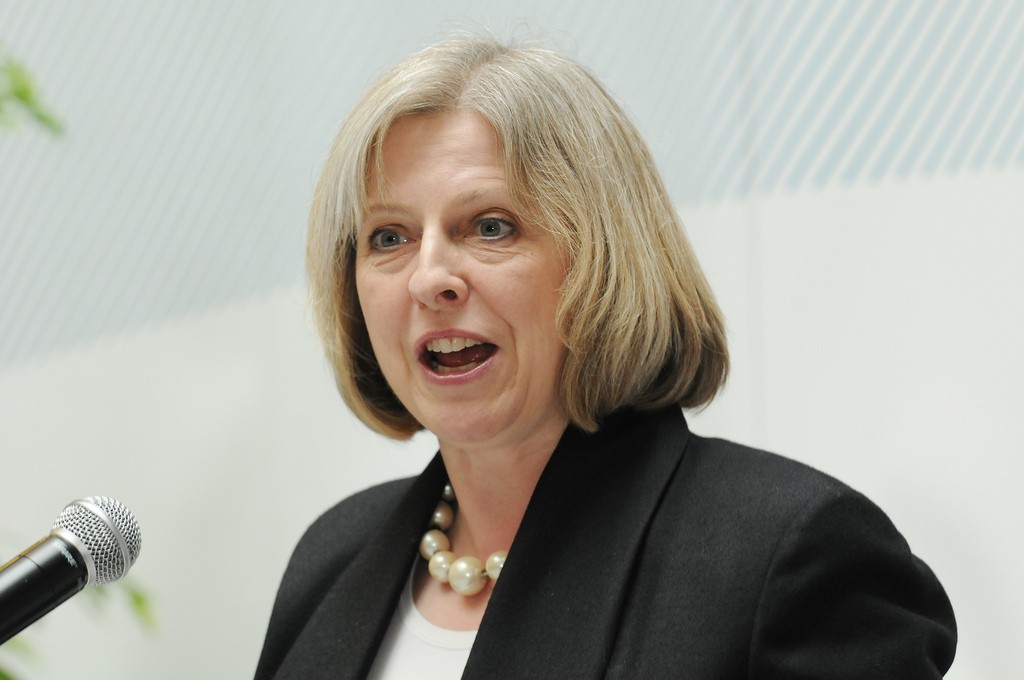Theresa May took the office of prime minister today in London, the second woman to hold the post. She brings a fresh perspective to the job, as the daughter of a vicar and as an active parish member in the Church of England.
In the Evening Standard:
The obvious point though, about Mrs May — she, like Mrs T [Margaret Thatcher], has no trouble with her married title — is that she has not made a point of her gender in the way, say, Angela Eagle has.
She is a woman all right, and a woman-friendly one who has promoted female candidates in the party, but she is not notably feminist. Her Christianity is the most important thing about her — her animating philosophy — in the way gender politics is not. When she appeared on Desert Island discs giving the Eucharistic hymn, Tantum Ergo, as her pick, and when she released pictures of her clergyman father yesterday she was making quite a clear statement about how she sees herself. We haven’t just got a woman at the helm, we’ve got an Anglican.
A commentary by Austen Ivereigh, published in Crux, takes a look at her life and influences until this point:
Every Sunday she can, she attends St Andrew’s in Sonning, the kind of pretty ancient Anglican church (part of it was built in the tenth century) that stands for Middle England in film and television series.
Its vicar, the Rev. Jamie Taylor, says she is a “very supportive member” of the congregation, who attends not just services with her husband Philip but what Anglicans call “socials” – special occasions such as the parish’s September show.
“We pray weekly for Her Majesty and those set in authority under her,” says the vicar, “and that prayer will take on a little more significance for us at St. Andrew’s in the years ahead.”
Ivereigh also makes connections between her political actions and her faith:
She set up a campaign to elect more women MPs to parliament, and as prime minister is likely have more women in cabinet positions than any previous UK government.
As Home Secretary she U-turned on gay adoption, calling in 2010 for a “cultural change” to tackle homophobia, and became a strong advocate of same-sex marriage, introduced in 2013, voting the following year to extend the same right to armed forces personnel serving outside the UK.
“If two people care for each other, if they love each other, then they should be able to get married”, she said.
Her evolving views have left social conservatives on the right of the Tory Party suspicious, while liberals point to her anti-immigrant rhetoric and call to withdraw from the European Convention on Human Rights.
She refused last year to accept a mandatory EU refugee quota system in response to the Mediterranean migrant boat crisis and outraged campaigners – including some Christians – by also ruling out Britain taking part in any future EU system to relocate asylum seekers who successfully make the journey across the Mediterranean.
A story in the New York Times, (which, despite its title – “Theresa May Is Britain’s New Prime Minister After David Cameron’s Resignation” – devotes many more paragraphs to Cameron than May) excerpts May’s first remarks as prime minister, focusing on social inequality:
Repeating almost word for word a speech she gave upon declaring her candidacy for the leadership of the Conservative Party, Ms. May vowed to fight the “burning injustice” of poverty; harsh treatment of blacks by the police; lack of university access for white working-class boys; mental illness; and pay disparities between women and men. She said that many Britons were struggling just to get by.
“The government I lead will be driven not by the interest of the privileged few, but by yours,” she said. “We will do we everything we can to give you more control over your lives.”

